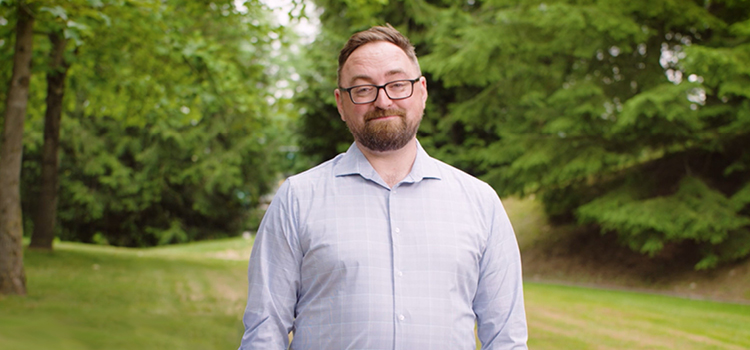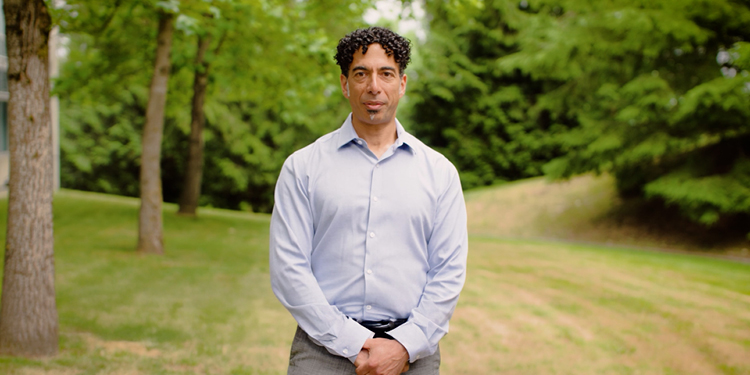Why Environment Management Plans matter in maintaining reliable energy and wildlife habitats
June 8, 2022
We all play an important part in ensuring BC’s natural spaces continue to thrive. As an energy solutions provider, delivering both hydroelectricity and natural gas to British Columbia’s Interior, protecting the natural spaces around our operations is a top priority.
Through an upgrade project at our Lower Bonnington Dam, two of our qualified environmental professionals, James Baxter and Serina Swanson, were part of the process before the project even started to ensure all environmental requirements were met and they continue to work with the operations team throughout the construction process.
Protecting natural spaces around our hydroelectric dams
We own and operate four hydroelectric dams on the Kootenay River–Upper Bonnington, Lower Bonnington, Corra Lin and South Slocan, which together provide approximately 45 per cent of the annual electricity needs of our customers.
The Lower Bonnington Dam, located approximately 18 kilometres southwest of Nelson was originally built in 1897 and then re-built in 1924 to include a new plant and three generating units. The facility has run continually since with regular maintenance and upgrades over the years. Maintaining and upgrading our hydroelectric dams is critical to making sure we can continue to provide customers with reliable and safe energy for years to come.
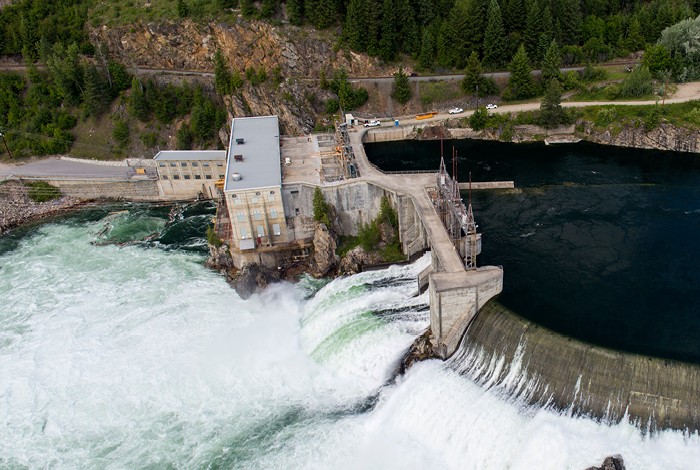
The Lower Bonnington Dam is located on the Kootenay River approximately 18 kilometres southwest of Nelson.
This maintenance project includes rehabilitation of the tailrace pier, the channel that carries water away from the dam, which involves updating and replacing sections of the concrete. While this work is critical to maintaining the infrastructure, it’s important that we are aware of the environmental impacts that could be associated with the work.
Let’s take a look at how we are protecting the aquatic species and spaces through this project.
Environmentally responsible project planning
Protecting aquatic and terrestrial habitats during all stages of a project is top of mind during the planning process. This involves identifying, managing and mitigating environmental risks associated with operations and project work.
It can be difficult to manage the impacts of construction activities without affecting the surrounding environment. Before any construction work can begin, our qualified environmental professionals put together an in-depth Environment Management Plan (EMP) to identify any potential impacts on the environment.
“Minimizing our environmental impact requires excellent communication between all members of our environment and project teams,” said Serina Swanson, environmental specialist, FortisBC. “We work alongside the operations team throughout the duration of the project to make sure that all construction activities comply with environmental regulations.”
The EMP covers all environmental aspects of a project from start to finish–including everything from aquatic resource management to waste management. If any unforeseen environmental incidents arise, all work must come to a stop so that the environment team can assess and rectify the situation before moving forward with construction.
This process was put into action when our environment team worked on a concrete rehabilitation project at the Lower Bonnington dam.
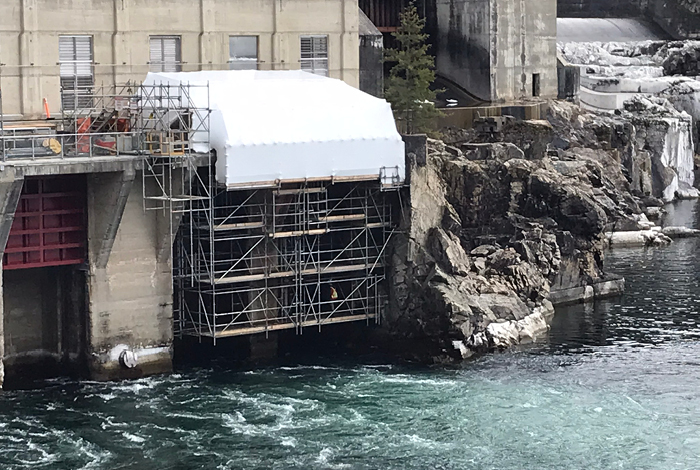
Concrete rehabilitation project at our Lower Bonnington hydroelectric facility on the Kootenay River.
Protecting aquatic and terrestrial habitats is a priority
The Lower Bonnington Dam is located along the Kootenay River where there are many different fish species, wildlife, invertebrates and other aquatic life. You may find species such as bull trout, kokanee salmon and rainbow trout swimming through these waters.
Due to the nature of the upgrade work, the tailrace channel that carries water away from the dam is lowered to complete the concrete repair. Lowering the tailrace can cause water levels to change, which can lead to potential impacts on aquatics species.
“Changes in water levels can cause fish to become stranded downstream,” said James Baxter, aquatics biologist, FortisBC. “We conduct fish stranding surveys to ensure that aquatic species can continue to successfully spawn in these areas and fish populations continue to grow.”
Another thing we’re mindful of when conducting this repair work is the possibility of accidentally introducing aquatic invasive species. Aquatic invasive species include plants, animals and other organisms that enter an ecosystem where they do not naturally occur. To avoid introducing these species to the ecosystem, the environment team works to ensure all equipment entering the site is thoroughly examined and cleaned before it’s brought into the site.
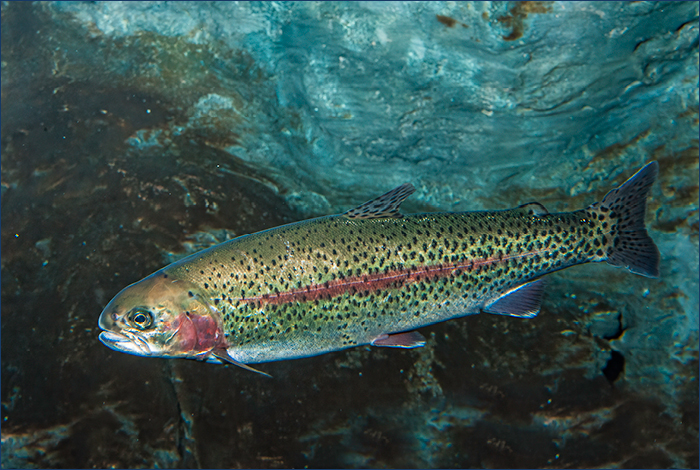
Bull trout, kokanee salmon and rainbow trout are among the many species found in the Kootenay River.
“When working on the Kootenay River, we’re very cautious of any impacts on the water quality and how it may impact the surrounding ecosystems,” said Serina.
The work site is isolated to prevent concrete or other construction materials from entering the waterway. If concrete dust and debris enter the water, it can introduce alkaline substances. The environment team conducts water quality testing throughout the duration of the maintenance work to ensure that it remains at appropriate levels.
Serina takes water samples before, throughout and after the completion of the upgrade work. Through her water samples, she tests three critical areas–pH levels, temperature and turbidity.
To ensure that her testing complies with regulations, she first takes samples downstream from the project site, noting the standard levels of the water in the area. She then takes samples as close as possible to the worksite. Once she has retrieved the samples, she compares the water from downstream to the water next to the worksite–this allows her to verify whether any materials from the construction site enter the water.
“We always make sure that someone from our environment team is on site during any large construction events like a concrete pour,” said Serina. “We have a supply of spill materials available on site at all times in the event that a concrete spill occurs.”
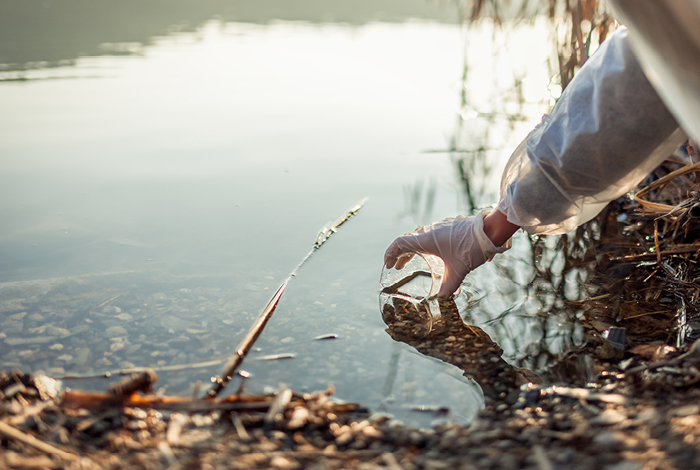
Our qualified environment professionals take water samples throughout the maintenance project to ensure water quality remains at appropriate levels.
Our environmental responsibility doesn’t stop once the repair work comes to an end. Construction sites produce a large amount of waste–concrete debris and other construction materials have the potential to impact the environment. We sort waste into hazardous and non-hazardous materials to ensure that we dispose of it in an appropriate manner that complies with regulations.
“Waste management is a big part of our environmental responsibility,” said Serina. “We recently started working with a local concrete company to repurpose remaining concrete materials, which is just one of the many sustainable efforts we make throughout and after completion of a project.”
Working together to protect the environment for today and tomorrow
Maintaining and upgrading our hydroelectric dams is critical to providing safe and reliable power for generations to come. Throughout the entire construction period, we emphasize the importance of protecting the natural environment. Minimal disruption to land, water, fish and wildlife is an overriding consideration in all planning.
Environmentally responsible project planning is part of our commitment to environmentally sustainable business practices and our overall Environmental Protection Plan.

